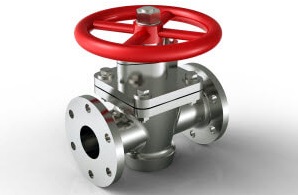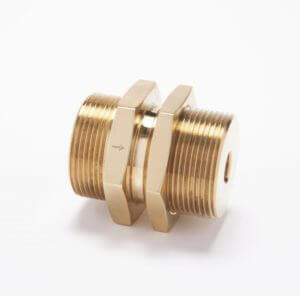The Check Valve Maintenance Guide
Have you checked your check valves lately? They require careful maintenance in order to ensure the safe flow of fluid and prevent overflow. Damage or wear can lead to a host of problems.
What systems do you have in place to ensure a “healthy” check valve? We have your easy guide to maintaining them.
Why Check Valves Matter
What is the purpose of check valves? If you need fluids to flow through pipes in one direction, you can’t do without them. Check valve design incorporates a two-port system, with an opening that allows fluid to pass through.
Once the fluid has passed, the valve closes to prevent backflow. Check valves can also automatically shut off if the downstream pressure builds too much.
Common uses of check valves:
- Water & waste pumping systems
- Water pipes
- Sewage systems
- Heating systems
- Fire hoses
- Marine & Naval industry
- Oil & gas pipelines
- Flush toilet mechanisms

There are many different types of check valves, including swing check valves, lift check valves, piston check valves, and ball check valves.
Maintaining a Check Valve
A check valve doesn’t require too much maintenance. They are built to last for years. However, they can develop leaks if debris or other foreign particles get stuck between the ball and the seat, causing check valve function to degrade.
Step 1: Keep it clean
Take steps to prevent damage to check valves by keeping the area clean. If you can reach the valve, all you should need is a towel to wipe off dust and dirt. If the debris is caked on, use a wire brush.
Step 2: Keep an eye out
Another easy tip is to do regular inspections of your equipment. It’s a good way to spot potential problems before you end up needing expensive repairs.
Check valve inspection:
- Check for leaks
- Look for signs of corrosion, rust or mineral build-up
- Replace the valve if there are extensive leaks or worn/broken pieces
- Open & close the valves to make sure they aren’t seizing
- Inspect pressure & temperature of fluid flowing through
- Ensure they aren’t close or over the rated limit for the valves
NOTE: Be sure to monitor high-stress and high-pressure valves more frequently.
Step 3: Clean everything up
You’ll need to take the valve out and disassemble it to look for debris and scratches. Wash all the parts with hydraulic fluid or whatever fluid is used in your pipe system.
Check the housing for corrosion, damage or a rough surface. Buffing can help take care of rough surfaces.
Step 4: Keep the valve lubricated
This step is often overlooked, but lubrication can keep you from having to replace or repair valves. It can also ensure optimum check valve operation, helping them last longer.
Rotate the valve to make sure the lubricant gets into the valve cavity.
Be sure to use the correct lubricant for your system. Each system has specific requirements and if you use the wrong one it could damage the valves. For example, lubricants with clay or other solid-based thickeners can harden, leaving residue behind.

Step 5: Apply protective insulation
Extreme temperature changes can affect check valve functions. They can even cause expensive damage. If your pipes are outside, you may need to add and inspect protective insulation as part of your maintenance routine.
Maintain Check Valves Now. Prevent Headaches Later.
Maintaining a check valve is the easiest way to prevent damage and expensive repairs. These tips will help to ensure your valves work efficiently and safely.
If you need to buy check valves, we can help you find the right kind for your system. Contact CVP Manufacturing for more information about requirements, recommended and applications or to request a quote.

